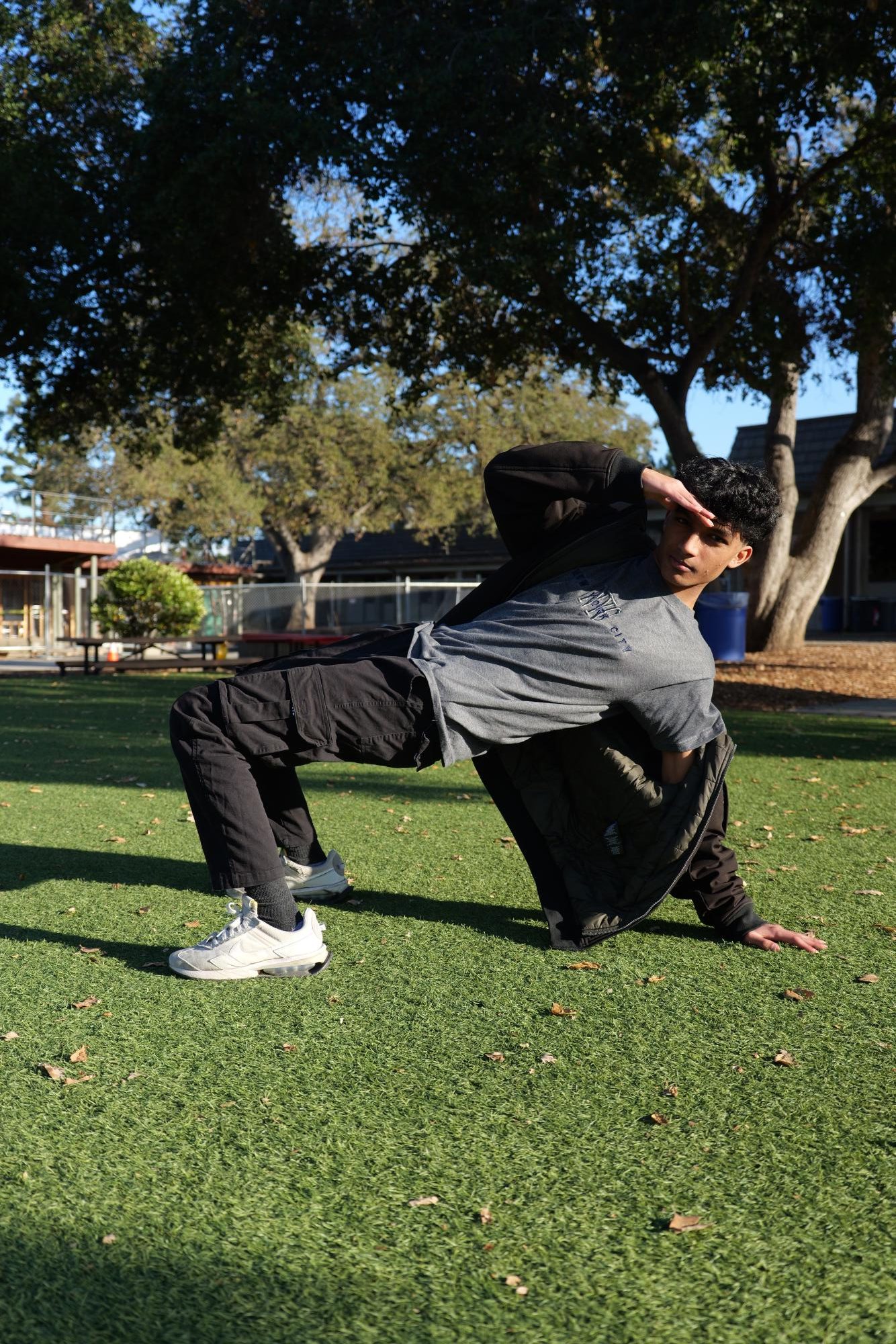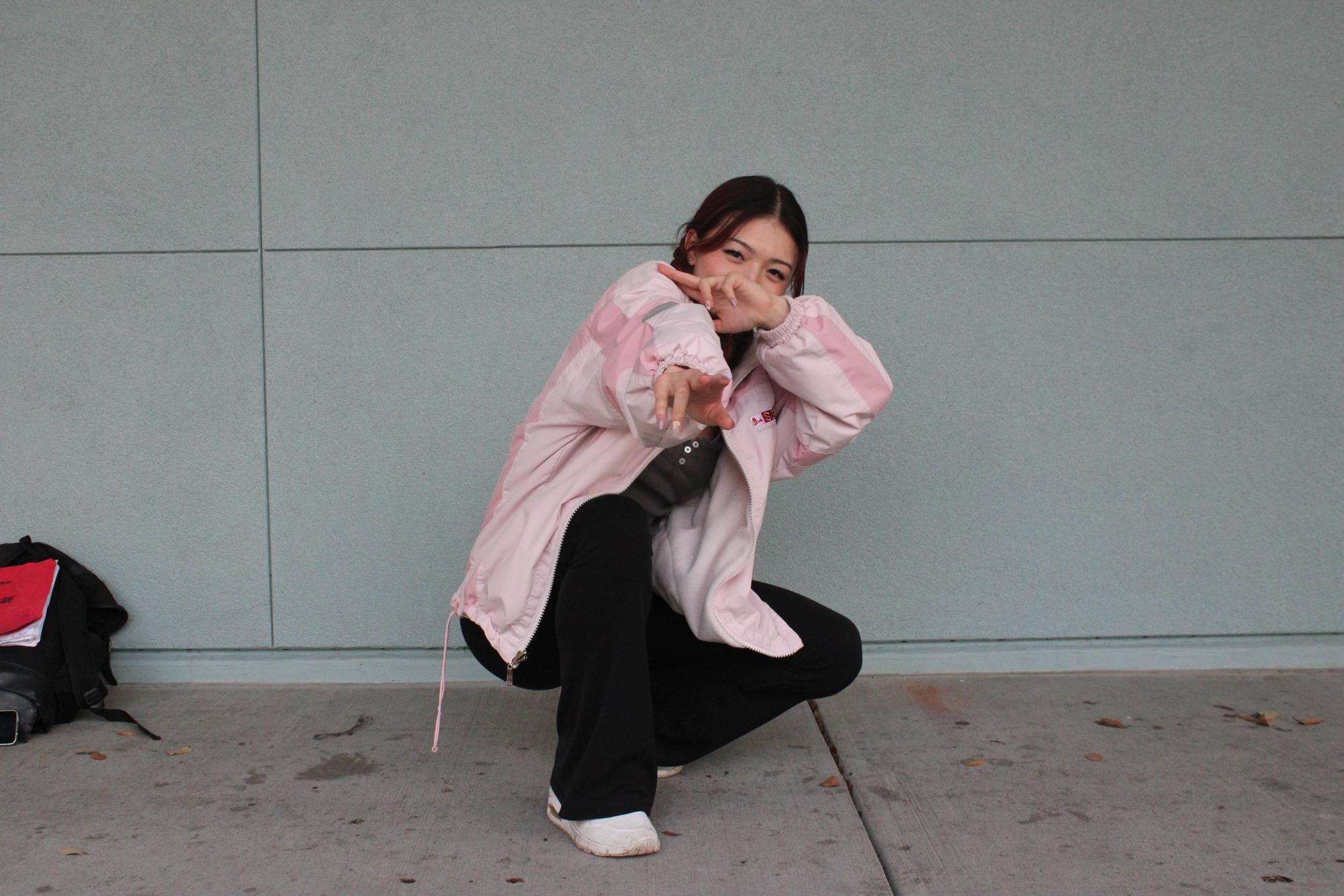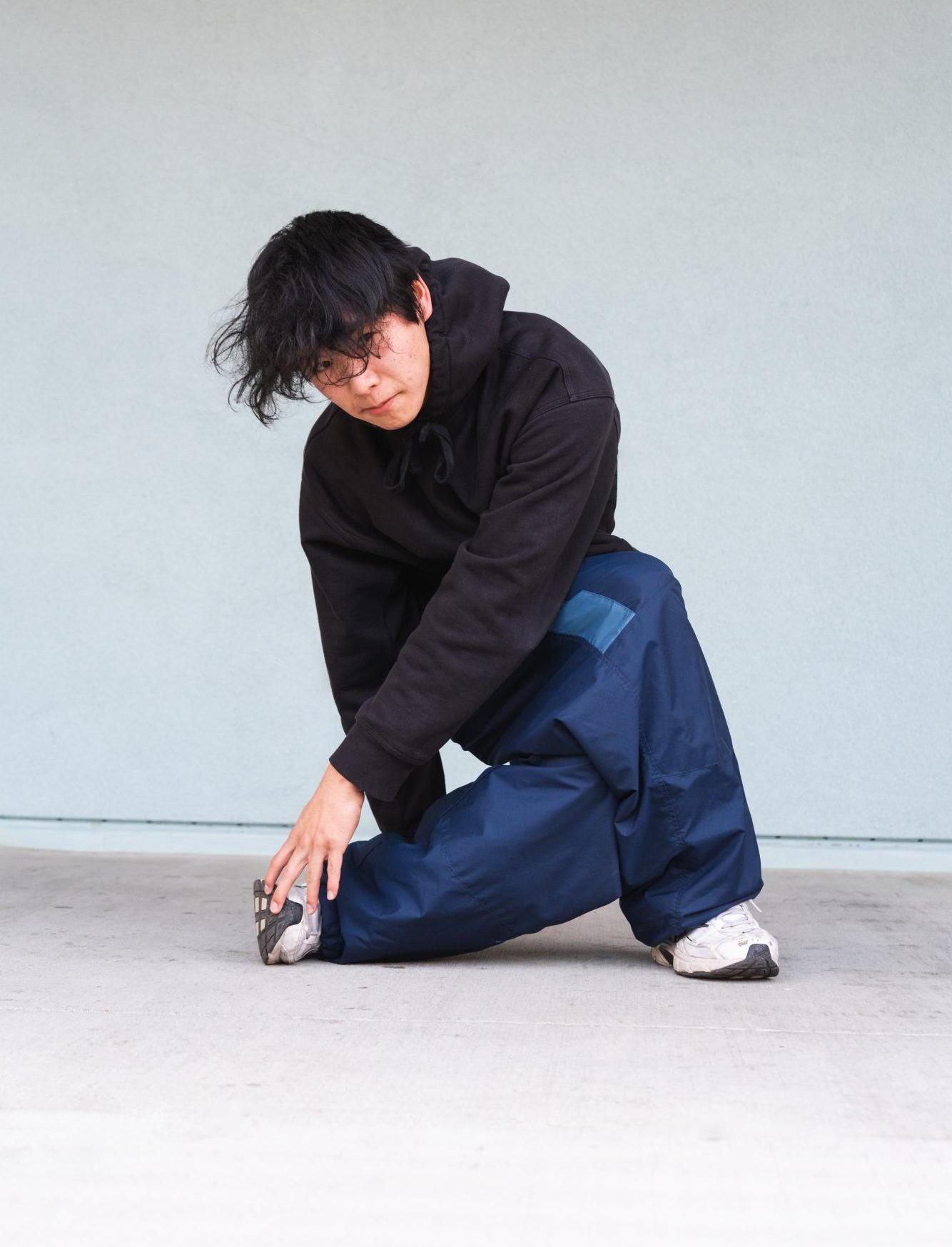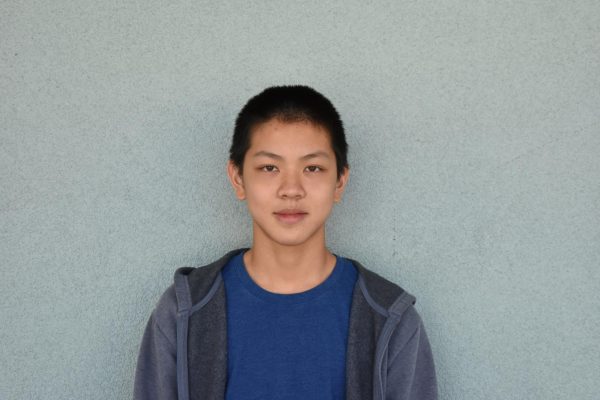
Unlike some of his peers in Gunn’s Hip-Hop Club, junior
Tanush Aggarwal didn’t begin his dancing journey with hip-hop. After exploring many dance types, however, he settled on hip-hop as his favorite.
“In the past I’ve done a lot of things, such as Bollywood, semi-classical Indian dance and contemporary, with some jazz in
there as well,” he said.
Aggarwal’s diverse dancing background has allowed him to develop a distinct hip-hop style.
“The fact that I started with those and then moved into hip-hop definitely changed my technique around hip-hop,” he said. “A lot of the time hip-hop is kind of just ‘feel the music’ — there’s generally less technicality and teachers are generally less focused on cleanliness. Starting with those other forms allowed me to bring that cleanliness with my dancing into hip-hop.”
Hip-hop is a fusion dance genre, without a single defined dance style. Thus, Aggarwal believes that the individuality of each member of Hip-Hop Club at Gunn is valuable.
“For example, there’s Dylan, who is more of a freestyler, and there’s me and a couple of others who focus more on choreography, and within that everyone has their own different styles,” he said. “For me, it’s more of like grooving and a little bit of popping in there as well. Grooving is kind of just like
feeling the music and vibing, more of those chill low-key moves, and popping is where you hit a beat, when you accentuate your movement and make it a sharp hit on that beat.”
Aggarwal’s dancing journey has been relatively hurdle-free so far, with the only setback being a scarcity of fellow dancers.
“It was a pretty big struggle last year for me as a club officer, and Stella and Dylan, to find dancers for the Hip-Hop Club,” he said.
While Aggarwal does not plan to pursue dancing professionally, he will continue dancing on the side in the future. His next goal is to pick up breakdancing.
“What I hope to do, especially in college, is to find a bigger, more advanced group and a bigger community to do it with,” he said. “(I hope) to increase the frequency of my performances, and also just continue to dance throughout my life with people I enjoy doing it with.”
For Aggarwal, dancing has always been more of a lifestyle than an activity. “Dancing has always been a part of who I am,” he said. “It shaped my personality in terms of the people I surround myself with and how I listen to music and how I go around my days.”

Junior Yayoi Tomaszewski fell in love with hip-hop dancing at first sight. Eight years old at her first lesson, she watched the advanced dancers in awe, hoping that one day, she’d be able to dance like them. Little did she know that she would be honing her hip-hop skills for the next eight years of her life, learning new techniques and gaining confidence.
Tomaszewski joined her first hip-hop dance crew at Dance Connection when she was 11 and participated in her first hip-hop competition with them. Although it seemed daunting at first, competing proved to be enjoyable.
“I had so much adrenaline,” she said. “I couldn’t sleep because I was experiencing so many new things. (But) we had a really good time, and I built friendships with people who were much older than me. Some of those friendships still last to today.”
Attending these competitions helped Tomaszewski improve both her hip-hop and communication skills.
“I was able to get out of my comfort zone in dance, but that would also apply to meeting and talking to new people,” she said. “It just broke me out of my shell and made me less shy.”
However, it has not been easy for her to master the dance style. Tomaszewski initially struggled with moving fluidly during quieter, slower parts of songs.
“Even though people think (hip-hop) is very carefree, chill and easy, there’s still a lot of technique that comes with it,” she said. “It took me a long time to be natural with it, and there would be a lot of internal frustration.”
To Tomaszewski, one of the unique advantages of hip-hop is that it allows dancers to express themselves freely.
“You’re able to express yourself in a way where, if you want to have a chill vibe or calmer energy, you’re still able to execute a hip-hop dance through that, but you can also be really hyped with it,” she said. “It gives me a much broader spectrum to be able to express myself in different ways.”
As Tomaszewski stopped dancing competitive hip-hop at Dance Connection, she joined other studios, where she refined her hip-hop personality.
“I’m very creative and energetic,” she said. “Most of the dances I
want to learn or perform have a lot of energy in them. I (also) try to incorporate improv a lot in dance too, so that’s where the creativity comes in.”
Tomaszewski draws comfort and inspiration from the authentic, like-minded peers she has found in the hip-hop community.
“The way a lot of hip-hop dancers interact with each other and other people is that they’re genuine with their kindness and compassion,” she said. “They’re super, super supportive, no
matter what, even if you’re not at the best level of hip-hop. I don’t feel like I’ll ever be truly judged by a hip-hop dancer.”
Even though Tomaszewski has taken a break from competitive hip-hop this year to focus on school, she continues to take classes occasionally to maintain her technique. In the future, however, she wants to join a dance team again to re-immerse herself in the community she knows and loves.
“I’m hoping to be surrounded by that same kind of community, because I do miss making a lot of friends and meeting new people,” she said. “So, wherever I end up going to college, I hope I can find a local dance team that competes to have a good time.”

When senior Stella Manning stepped onstage at
Gunn’s TEDx conference last February, she was nervous.
As Baby Keem’s “family ties” began playing, she quickly
slipped into rhythm, shifting focus onto the beat instead
of the crowd.
Manning started taking hip-hop classes in middle school at the
Menlo Park Academy of Dance. Inspired by her older brother’s performance at TEDx, she joined Hip-Hop Club as a freshman,
and has been the club’s co-president since sophomore year. Over the past few years, she has choreographed routines, mentored new dancers and elevated her freestyling skills.
Manning was first introduced to dance through ballet in elementary school. Today, hip-hop dance represents a kinesthetic freedom to Manning, enabling her to create her own rules.
“I really liked the contrast between ballet and hip-hop,” she
said. “Ballet was very strict and rule-oriented. Hip-hop felt like
sort of breaking those rules.”
Informed by her ballet background, Manning prefers moving slowly and focusing on individual body movements, instead of
freestyling or breakdancing.
“I try to pick certain isolated movements to perfect and then
link them together,” she said.
Working on performances for the Hip-Hop Club has taught Manning how to choreograph a routine.
“It definitely can be challenging,” she said. “It’s easier to take inspiration from other pieces of choreography and sort of incorporate it into your own, but it’s difficult starting from a clean slate. It can be difficult to make the next move. It’s easy for things to get static.’’
For the TEDxGunnHighSchool conference in Februrary 2022, Manning and other members of the club worked to choreograph
a routine to “family ties.” For this performance, Manning tried freestyling for the first time and appreciated its versatility.
“We started by freestyling to the song,” she said. “Once we ran through it a few times, that’s when we started to decide what moves we wanted to use (in the performance).”
Through working together on routines and learning new skills with club members, Manning has found a supportive community of friends to create and dance with.
Besides continuing to take classes in the Bay Area, Manning also workshopped her hip-hop skills and met other talented young dancers at a hip-hop intensive program in New York in 2018.
“New York had a very different vibe,” she said. “It’s fun to reflect back on. There are certain songs that remind me of the program. I remember ‘Nice For What,’ by Drake, was the song that we choreographed a dance to.”
Aside from joining Hip-Hop Club, Manning suggests that those interested in learning hip-hop use online resources to learn more.
“I would recommend starting by just watching other people dance,’’ she said. “Watching choreo or freestyle is a good first step, and then even starting to dance on your own in your house or your room is valuable.”

With booming hip-hop bass emanating from a speaker behind him, senior Dylan Qu maneuvers smoothly through a series of breakdancing moves, contorting his body to match the rhythm of the drumline. Despite already having practiced for two hours, he pushes through the fatigue, driven by a passion for his craft.
Qu began breaking in his freshman year, when his initial interest drove him to join Gunn’s Hip-Hop Club. Through the club, he met experienced dancer freshman Trevor Kovacs, who helped him hone his skills through hosting workshops in his garage. Even early in his journey, Qu could tell his passion for breaking ran deep.
“One of the things that was strange about it was, I could never understand why you wouldn’t want to break,” he said. “I remember Trevor was teaching some other people, and I couldn’t understand why they weren’t interested. And when (my brother) started breaking as well, I just couldn’t understand why he quit. I didn’t get why you wouldn’t want to break.”
Qu would spend countless hours browsing breaking videos on YouTube, mesmerized by the professional tricks and sequences captured on screen.
“The motivation (to break) started out extrinsic,” he said. “I just wanted to do windmills. And then it kind of spiraled into learning everything. It’s like, if I learn windmills, I might as well learn how to do a six step. So that’s how it started. And now it’s more intrinsic: I do it because I love it.”
Though video tutorials are a readily available and helpful resource, learning the technique to execute moves doesn’t translate to understanding the complex history and ideas behind them. This shortcoming is why Qu emphasizes finding your own community to learn from: Human connection is the key to breaking.
Competitions, or battles, are a vital component of breaking, where dancers showcase their individual style and skills against others in front of a crowd and judges. Despite Qu’s enthusiasm for breaking, he hasn’t yet traveled long distances to attend competitions — Los Angeles is the farthest he has ever gone. But Qu is hoping that by taking a gap year next year, he will be able to get more involved with this aspect of breaking.
“Being good at battling is very different from being good,” he said. “Someone that has really good personality and character will always lose to someone that just checks all the boxes. And I’m not trying to just check all the boxes — I’m trying to be my own person.”
In fact, individuality is one of the things Qu values most
in breaking. From music that encapsulates his personality to his dynamic dance style of hard-to-categorize moves, breaking has helped him come out of his shell and become comfortable with living in his own world.
“Nobody dances like me, and it’s very much a privilege to be able to have tangible individuality,” he said.
Ultimately, Qu wants to remind people that breaking is an art, not an easy or unsophisticated form of expression.
“I am an artist, not just a guy that does tricks,” he said. “I’m part of the community and part of the culture. I’m more than just a guy that spins. I’m more than just a Beyblade.”
—Reporting by Bryan Xiao
Your donation will support the student journalists of Henry M. Gunn High School. Your contribution will allow us to purchase equipment and cover our annual website hosting costs.









